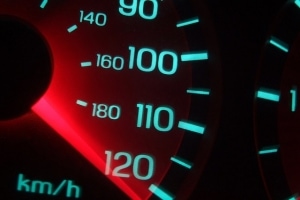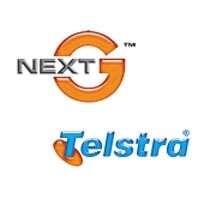Is This The Future Of Coffee Tables?
How cool is this?
Microsoft’s new touch screen technology in the form of a coffee table. It will eventually be used for self service kiosks etc.

How cool is this?
Microsoft’s new touch screen technology in the form of a coffee table. It will eventually be used for self service kiosks etc.
This is why you should look at making sure you have Service Pack 3 (SP3) installed, or think about migrating to Windows 7 in the near future.
Microsoft has announced that support for Windows XP with Service Pack 2 (SP2) 32-bit operating system will end on 13th July 2010, and support for Windows Vista Release to Manufacturing (RTM) will end 13th April 2010.
If you are running the 64-bit edition of Windows XP with SP2, you will continue to be eligible to receive Microsoft support and updates until 8th April 2014. There is no SP3 for the 64-bit version of Windows XP. To find out if you are running the 64-bit version of Windows XP, go to the Start menu, right-click My Computer, and then click Properties. If you don’t see “64-bit” listed, then you’re running the 32-bit version and need to install the Windows XP SP3.
![AVG[1]](https://spottydog.com.au/wp-content/uploads/2009/08/AVG-Checked-Virus-Free1.png)
The first one had me stumped for a while because I was thinking it was a driver or a recent windows update that was causing the problem. So to get it going again, I got the customer to boot up in Safe Mode and use the windows “System Restore” feature to return the Registry to an earlier time when all was good. This did the trick, but within a couple of weeks, the same thing happened again. This time I got the customer to bring the computer into the office for me to take a closer look.
I began by disabling things that were starting at boot up, and it just so happened that the first thing I chose was AVG antivirus. Low and behold, once it was disabled the system booted up without any trouble. Now I was confused. Why had it taken a couple of weeks for the problem to return? AVG regularly updates itself so the problem should have returned within a day or two. The reason was that the customer rarely used the PC and AVG hadn’t had time to update itself again.
On the very same day I had a call from another customer with an Acer computer with exactly the same problem. So I got them to boot up in Safe Mode and uninstall AVG and download and install PC Tools Antivirus.
Then just this morning I had a third Acer PC land in the office, but this time the symptom was that it would boot to the desktop, but no icons would appear. Once again AVG was the culprit.
I have since contacted AVG, and it turns out the problem is a piece of Acer software called eLock. Apparently an updated version is available from Acer. Wouldn’t it be nice if they shipped their computers with the updated software? Nahhhhhhhhh that would be too easy.
Now I ask you, who would want to work fixing computers? !!!!!!!!!!!
The following videos are from a British comedy called the “IT Crowd”.
They appealed to me so I decided to post them here.
I am often asked, “what is the best antivirus product to use”. I usually reply with a smart arse response like, “how long is a piece of string?”, quickly followed by, “It matters not what protection you have on your computer. If you do the wrong thing on the internet, you are stuffed”. Or words to that effect.
It amazes me how many people think that just because they have antivirus and/or antispyware software, they are somehow invincibly protected and can do what they like on the internet with impunity.
The fact is that literally thousands of new viruses/spyware/malware are being released every week, and whilst antivirus and antispyware software can detect virus like activity, they cannot possibly know about all the different infections and variants. They are really only as good as the database of known bugs.
So, if you like going to porn sites, crack/cheat/pirated software sites, installing free screensavers willy nilly, surfing for gimmicky add-ons and smiley faces for email and MSN, using peer-2-peer programs like Limewire, then I can almost guarantee it will end in tears.
Having said all that, you MUST have antivirus and antispyware software installed on your computer. I am no fan of Internet Security Suites because invariably they use a lot of system resources and can cause more problems than they prevent. Particularly their firewalls. Usually you will get asked, “do you want to block this thing or allow it?” And you would know the answer to that question how?
I recommend you use AVG Free. It is as good as any other antivirus program and now incorporates a little bit of antispyware as well. You can download it from http://free.avg.com/
****EDIT****
We no longer recommend AVG.
Our recommendation is now Norton Internet Security.
For a more detailed look at what Viruses and Spyware are and the do’s and don’ts, download my virus and spyware notes. Remember Prevention is better than cure. Once you are infected the bugs can be very difficult to remove.

Epitiro’s analysis claims that Australians receive on average 65.5% of advertised package speeds when downloading data from national sources. ADSL2+ packages achieved an average 53.7% of advertised package speed; downloads from international servers are considerably worse (14.5% on average). Downloading data from locations outside Australia is also said to be much slower than in most other countries. Telstra topped the ratings, whilst Optus slid right down the scale, something Optus customers don’t need to be told. I have said it before and I will say it again, you might not like Telstra, but you can’t deny the quality of their product.
Here’s how Epitiro placed the ISPs (with previous quarter rankings in brackets):
1. Telstra (1)
2. TPG (3)
3. iiNet (2)
4. Netspace (4)
5. AAPT (7)
6. Internode (8)
7. Westnet (6)
8. Optus (5)

Speaking at the Mobile World Congress in Barcelona, Telstra CEO Sol Trujillo announced that Telstra will increase the speed of its Next G network from 14.4 Megabits per second to 21Mbps on February 23, and to a staggering 42Mbps by years end. At 21Mbps, it is already the fastest network in the world and as such has been entered into the Guinness Book Of Records. That’s roughly four times faster than anything currently available from other telcos. It appears that this commitment will also cover the HSPA (High Speed Packet Access) evolution outlined by Ericsson on 13th Feb, which could push future peak speeds to an amazing 168Mbps.
Business customers will be among the first in Australia to access Telstra’s upgraded Next G service when it goes on sale next week. Telstra business customers will be able to sign up to the 21Mbps Next G service from February 23, but consumers will have to wait until April. The improved service will launch nationally with Mr Trujillo saying, “We won’t be going city by city or base station by base station, it will go nationwide”.
Mr Trujillo said consumers could expect to download a 2MB video in about 6 seconds with the speed upgrade. Although the network is capable of peak speeds of 21Mbps, a lack of compatible devices will make it difficult to achieve these speeds. The upgrade will only be available to users of mobile data devices, but Telstra is expecting 21Mbps compatible PDA’s and handsets to be available at the end of the year.
Telstra has steadily increased the speeds of its Next G network since launching in 2006 with a theoretical peak speed of 3.6Mbps initially, then to 7.2Mbps in 2007 and 14.4Mbps early last year. Telstra now says the network will deliver speeds up to 42Mbps to 99 per cent of the population by the end of 2009. Real world speeds vary depending on location and how many users are on the network at any one time.
Now all we need is for Telstra to drop the pricing to a level that is affordable!!!!
Albany Creek 4305, Banksia Beach 4507, Beachmere 4510, Beerburrum 4517, Bellmere 4510, Bongaree 4507, Bracken Ridge 4017, Brendale 4500, Bracken Ridge 4017Bribie Island 4507, Burpengary 4505, Caboolture 4510, Caboolture South 4510, Cashmere 4500, Dakabin 4503, Deception Bay 4508, Donnybrook 4510, Elimbah 4516, Kallangur 4503, Kurwongbah 4503, Lawnton 4501, Mango Hill 4509, Meldale 4510, Moorina 4506, Morayfield 4506, Narangba 4504, Ningi 4511, North Harbour 4505, North Lakes 4509, Petrie 4502, Redcliffe 4020, Rothwell 4022, Sandgate 4017, Sandstone Point 4511, Scarborough 4020, Strathpine 4500, Toorbul 4510, Upper Caboolture 4510, Wamuran 4512, Warner 4500, Woorim 4507.
Other areas may be possible on request.
I took the plunge and upgraded from Windows 10 to Windows 11. Ok. It looks slicker, a bit of window dressing as far as aesthetics are concerned, and I won’t go into Window’s 11’s features and functions. But the thing that immediately strikes you is …
I took the plunge and upgraded from Windows 10 to Windows 11. Ok. It looks slicker, a bit of window dressing as far as aesthetics are concerned, and I won’t go into Window’s 11’s features and functions. But the thing that immediately strikes you is …
With ever increasing actions by “Big Tech” in general to collect more and more data about us, and the rise in Governments monitoring what we are doing as well as our ISP’s, I’ve been meaning to write something like this for some time now.
But it was the recent actions by FaceBook to take down News Pages and Links…
Well it’s not long now before Windows 7 reaches End Of Life (EOL). So what does this mean for you, and what do you need to do?
I recently had dealings with Microsoft on behalf of a customer that I can only describe as disgraceful and disappointing. The customer in question was an elderly lady with Parkinson’s disease. She had been the victim of a crypto-virus attack, and I had no alternative other than ….
Mon to Fri: 8:30am – 4:00pm
Closed: Weekends & Public Holidays
